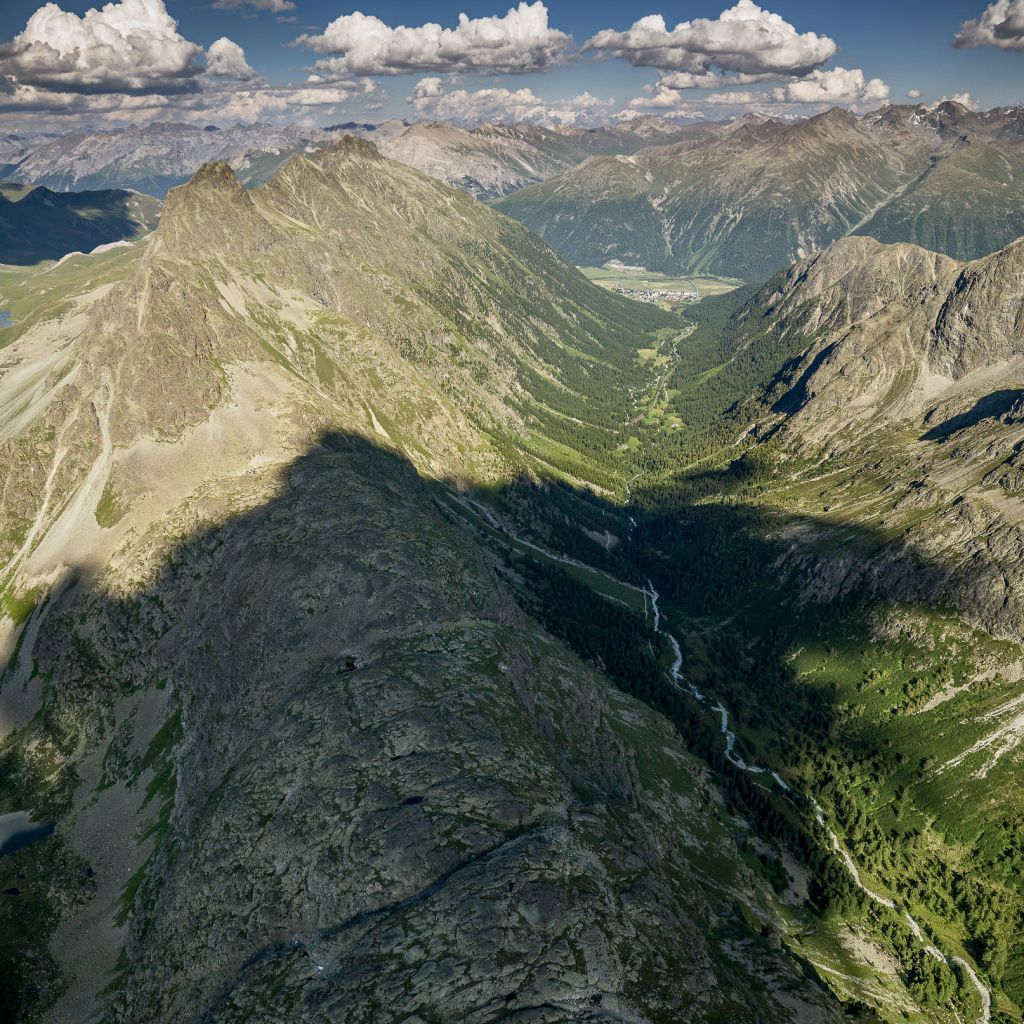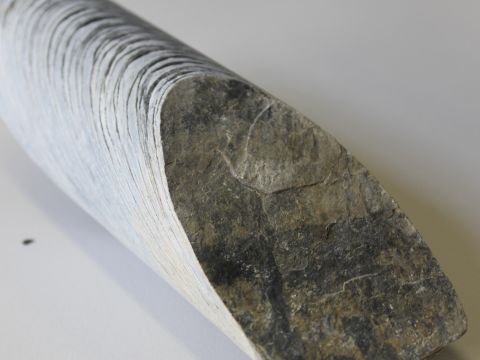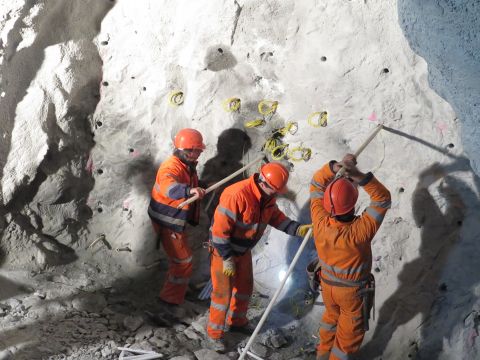How it all began…

The place where you are a now standing was not always in the mountains. Millions of years ago, Preda lay on the coast. The exciting history of how the Alps were formed does not just fascinate geologists.
The Paleozoic Era
Between 252 and 541million years ago
The Paleozoic Era saw the emergence of many forms of plant and animal life, including the first dinosaurs.
This era also witnessed the merging of all the earth's land masses to form the super-continent of Pangaea, along with the formation of the of Albula granite that now characterises a large part of the landscape south of Preda and the Albula Pass (e.g. Piz Palpuogna, Dschimels).
The Triassic Era
Between 201.3 and 252.2 million years ago
The Triassic Era marked the start of the dinosaurs’ dominant period. The vast super-continent of Pangaea allowed land animals to spread without restriction.
In the seas at the edge of the continent, shallow-water sediments that we now know as main dolomite (such as that found in the high rocks of Piz Muot above the Hotel Kulm, and also in the building blocks of the tunnel entrance) began to form, along with Raibler cellular limestone, which proved to be tricky to deal with when it came to building the tunnel.
The Jurassic Era
Between 145 and 201.3 million years ago
This era, which was the golden age of the dinosaurs, also saw the emergence of the first birds and mammals.
As the super-continent of Pangaea gradually began to split into today's various continents, Allgäu slate was formed in an inland sea basin. At the same time, the friction created by tectonic movements produced mylonite.
The Cretaceous Era
Between 66 and 145 million years ago
Dinosaurs were still widespread in the Cretaceous Era.
The continental plates began to collide into each other in this period, thereby creating the initial rock formations of the Alps. The different strata of rock in the Albula region were slowly pushed on top of each other to form a stack of layers.
The Tertiary Era
Between 2.6 and 66 million years ago
The dinosaurs died out during the transition between the Cretaceous and Tertiary eras, thereby heralding the heyday of the mammals.
The formation of the Alps was fully under way by the Tertiary Era. The tectonic structure of the Albula region suffered serious deformations, to create faults throughout the area; visible above all in the formation of Allgäu slate.
Successive erosion then left the tectonic structure of the Albula region exposed on the surface.
The Quaternary Era
From 2.6 million years ago until the present day
The Alps were largely formed during this period. There was a slow alternation between periods of hot climate and ice ages, with corresponding advances and retreats of glaciers. This resulted in the mountains being partly covered by moraines, as is the case in Preda and Spinas, for example.
After the most recent retreat of the glaciers, the moraine was partially covered by fallen or waterborne rock debris.

